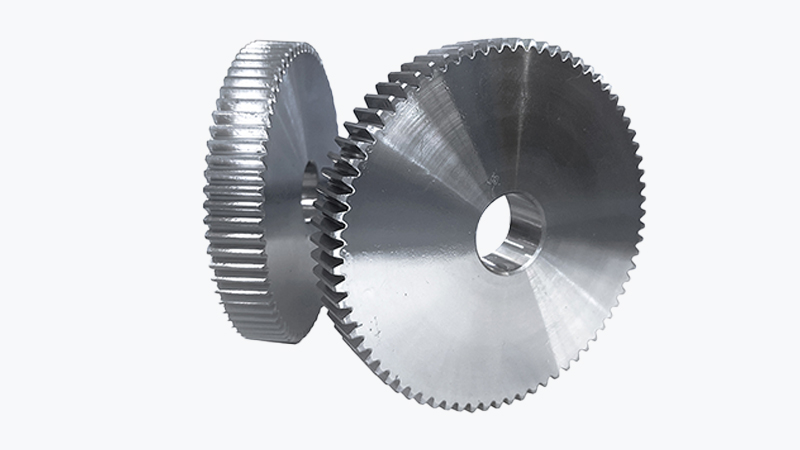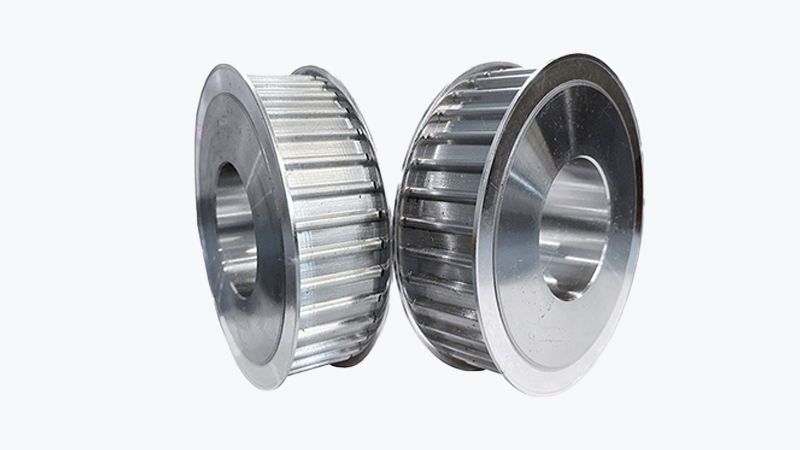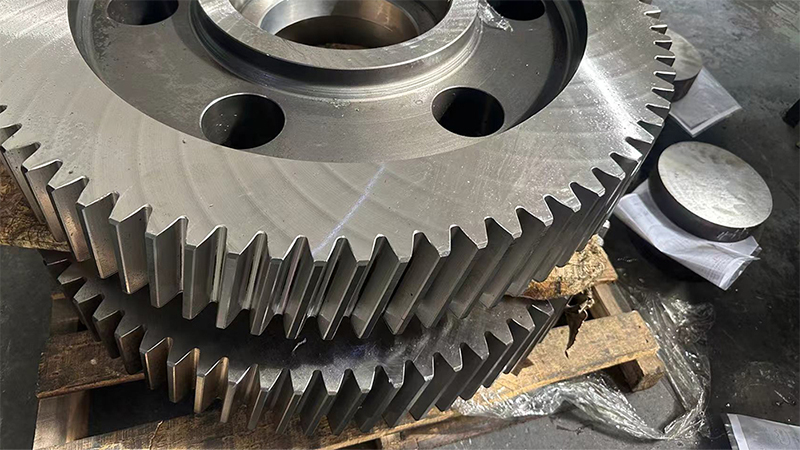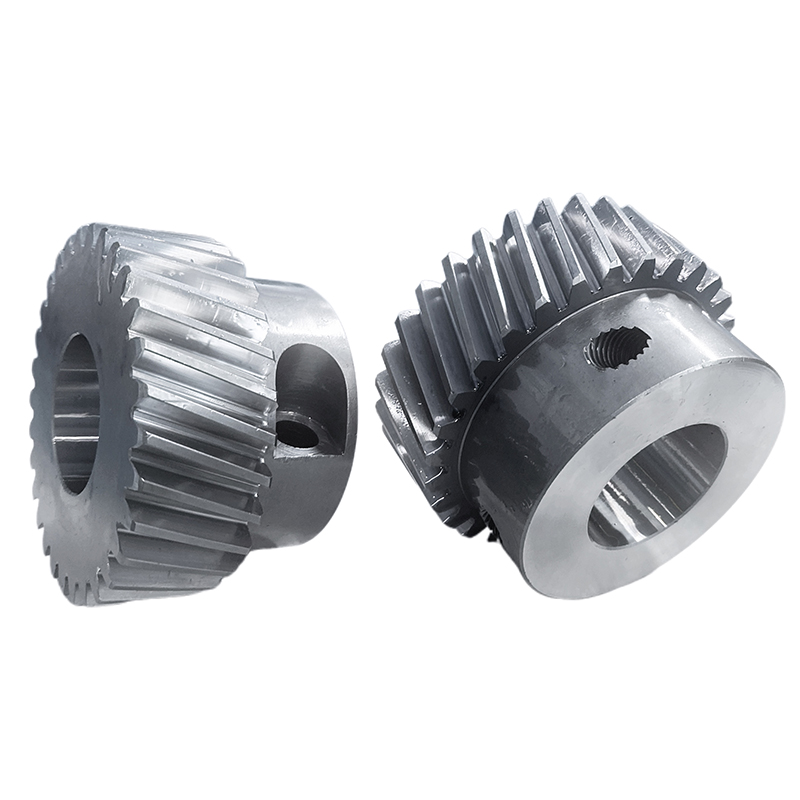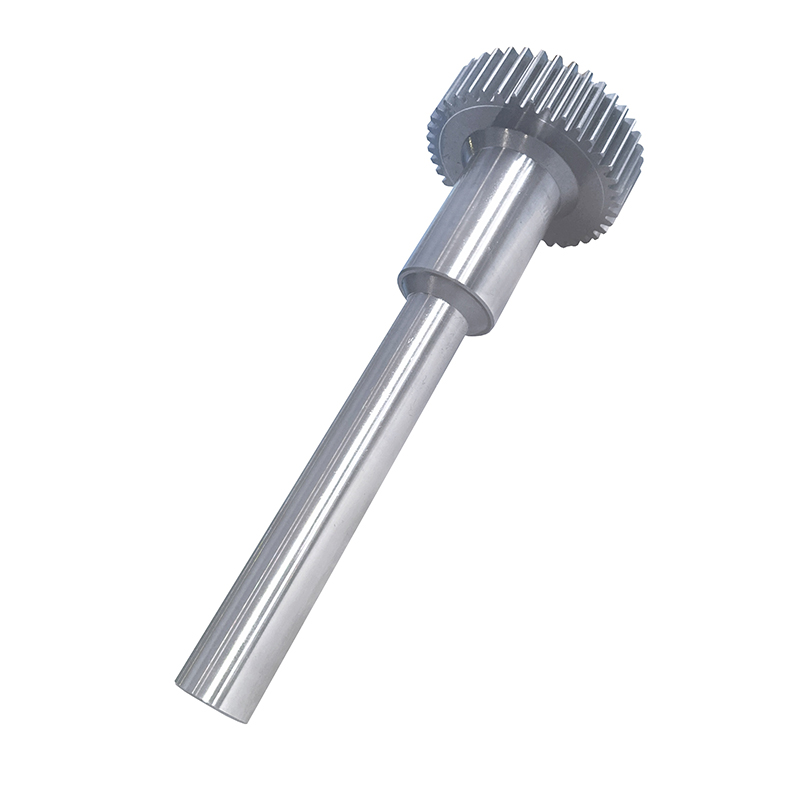Analysis of Three Common Faults in Gear Transmission
(1) Manufacturing error
When manufacturing gears, several typical errors such as eccentricity, pitch error, pitch error, and tooth profile error are usually generated. There are many reasons for these errors, including errors in machine tool motion, errors in cutting tools, errors in improper installation and debugging of tools, workpieces, and machine tool systems, errors in fixtures, and gear deformation caused by internal stress during heat treatment. When these errors in the gears are large, they can cause micro inertia interference in the gear transmission, causing impact and vibration during gear meshing, resulting in significant noise.
(2) Assembly error
Due to assembly technology and methods, there is usually an assembly error of "one end in contact and one end suspended" when assembling gears; Linear deviation of gear shaft (coaxiality, centering error) and gear imbalance, etc. One end contact or linear deviation of the gear shaft can cause uneven load on the gear, resulting in some teeth being overloaded and causing local early wear, and in severe cases, even leading to tooth fracture. The imbalance of gears will cause impact vibration and noise.
(3) Malfunctions generated during operation
1> Plastic deformation of tooth surface. When the gear material is soft and transmits a large load, plastic deformation of the tooth surface is prone to occur. Under the action of excessive friction between tooth surfaces, the contact stress between tooth surfaces will exceed the material's yield limit for compression resistance, and the tooth surface material will enter a plastic state, causing plastic flow of the tooth surface metal. Resulting in the formation of concave grooves on the tooth surface of the driving gear near the pitch line, while the tooth surface of the driven gear near the pitch line forms convex edges, thereby causing damage to the tooth profile. Sometimes, "flash burrs" may appear on the driven tooth surface of certain types of gears. In severe cases, the extruded metal filling the top gap can cause severe vibration, even bending or breaking, affecting the normal meshing and transmission of gears.
2> Fracture of gear teeth. During gear transmission, the force exerted by the driving gear and the reaction force exerted by the driven gear both act on each other's teeth through contact points. The most dangerous situation is when the contact point is located at the top of the teeth at a certain moment; At this point, the gear teeth are like a cantilever beam, and the bending stress generated at the root of the gear teeth after being loaded is the maximum. If there is a sudden overload or impact overload, it is easy to cause overload fracture at the root of the gear teeth. Even if there is no force condition of impact overload, the phenomenon of alternating stress concentration generated by the gear teeth under alternating load is still prone to fatigue cracks; Gradually expanding, causing fatigue fracture of the gear teeth at the tooth root. In addition, due to manufacturing and installation errors, damage caused by quenching cracks, grinding cracks, and excessive thinning of tooth thickness after severe wear, fractures may also occur at any part of the gear teeth.
3> Tooth surface fatigue. The so-called tooth surface fatigue mainly includes tooth surface pitting and peeling. The main cause of pitting corrosion is the micro fatigue cracks caused by the pulsating contact stress on the working surface of the gear teeth. When the lubricating oil enters the surface crack zone, the inlet is first closed and then squeezed during the meshing process. The lubricating oil in the micro fatigue crack zone causes the crack area on the tooth surface to expand under high pressure, resulting in the detachment of surface metal particles from the tooth surface, leaving small pits and forming pitting corrosion on the tooth surface. When the fatigue cracks on the surface of the gear teeth continue to propagate deeper and farther, or cause a series of small pits to fail and connect, resulting in large areas or large pieces of detachment, tooth surface peeling is formed.
4> Wear or scratches on the tooth surface. The relative sliding of gear teeth during meshing transmission, coupled with poor lubrication, unclean lubricating oil, deteriorated lubricating oil, low-speed overload, or poor heat treatment quality, can all cause adhesive wear, abrasive wear, corrosion wear, and scratches on the gear tooth surface.
For faults that occur during gear transmission, a comprehensive analysis should be conducted from these three points to identify the root cause of the problem. The production of gears requires high precision in numerical values, and even a slight error may result in the gear being produced as unqualified and scrapped, causing losses. Therefore, when producing gears, employees must be fully focused to reduce unnecessary errors.







